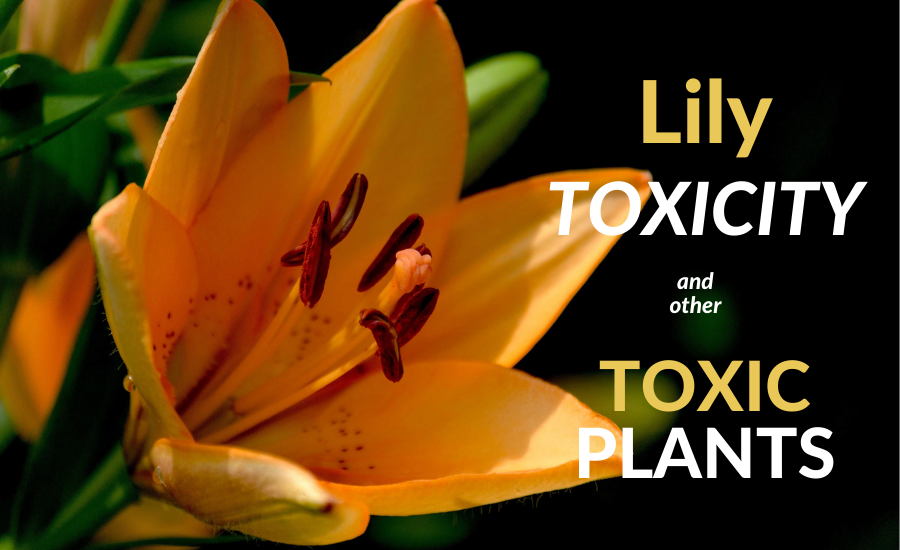Do you know if the plants in your house are safe for your pet? As spring approaches and flowers begin to bloom, it’s essential to know which plants are safe and which ones could be toxic to your pet.
Here are a few of the most common toxic plants and what you need to know about keeping your pet safe.
What You Need To Know About Lilies
When it comes to toxic plants, Lilies are the most commonly discussed toxic plant group. There are many different types of lilies and the toxic effects can vary.
Lilies of the True Lily and Daylily family are the species of most concern. These lilies are extremely dangerous to cats and can cause kidney failure. In some cases, these lilies can be fatal, so it’s critical to keep these flowers away from your feline friends. While the effects of True Lily and Daylily toxicity are less severe in dogs, they can cause digestive upset and should still be avoided.
Another Lily of concern is Lily of the Valley. This dainty bell-shaped flower contains cardiac glycosides that cause abnormal heart rates and arrhythmias. The majority of the toxins are concentrated in the bulb. However, all parts of the plant should be considered dangerous.
Calla Lilies and Peace Lilies are generally considered less dangerous than other members of the lily family, but they can still pose a potential risk to your pets. When ingested, the flowers release calcium oxalate crystals which can cause oral burns or digestive upset.
If your pet has come in contact with a toxic lily, it’s essential to get them immediate veterinary care. If your pet’s exposure occurs outside of our normal business hours, please visit the Animal Emergency and Referral Center of Minnesota.
Tulips, Daffodils, and Other Spring Bulbs
While these bright and cheery flowers are a spring favorite, they are not ideal to have around pets. Tulips and other spring bulbs such as hyacinths and daffodils contain toxins that are typically concentrated in the bulb. While the bulb is the most dangerous part of the plant, consumption of any part of these flowers can be problematic for your pet.
Symptoms will vary depending on the flower and how much toxin is ingested. However, common symptoms of toxicity include drooling, vomiting, diarrhea, lethargy, and depression. In severe cases of toxicity, pets can also experience elevated heart rates, abnormal respiratory rate, difficulty breathing, and seizures.
You can help keep your pet safe by limiting their exposure to these flowers. Be cautious when purchasing flower arrangements for your home. When planting these flowers, keep them out of areas that your pet can easily access. This is especially important if you have a dog who enjoys digging and may mistake your spring bulbs for a tasty treat.
Give Us a Call
At Minnesota Veterinary Hospital, your pet’s health and safety are our top priority. If you have questions about toxic plants or believe your pet has been exposed, please give us a call at 651-484-3331. We can help you determine your pet’s risk and make sure they get the medical attention they need.
We hope this information will serve as a helpful guide to keeping your pet safe this spring.
Image credit: Pixabay

